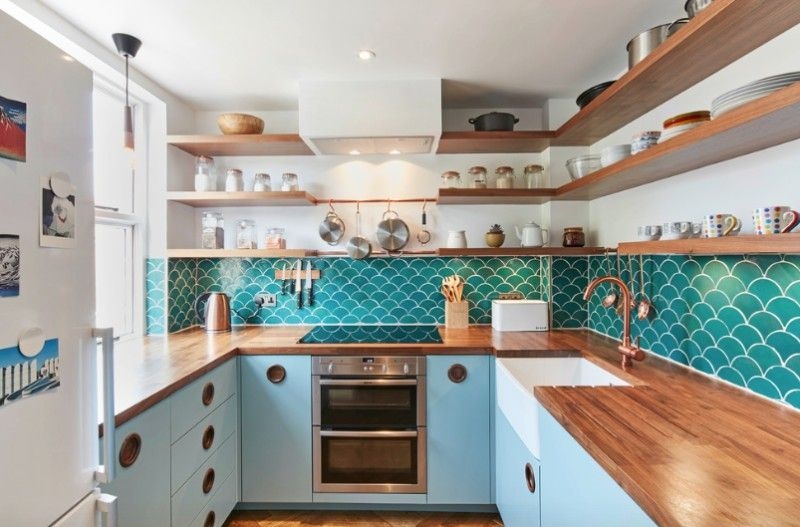The modern American house, with its interlaced spaces, functional zones and cubic forms, was developed in Europe by Le Corbusier and others, modified in America by the works of the Masters, and transformed into a new idiom through its regionalization.
The images of the “American house” were transmitted around the world, making it the modern model for the 1950s and 1960s.
An essential contribution to the genesis of the ‘American modern house’ idea was given by John Entenza -publisher of Art & Architecture- that in 1945 conceived the ‘Case Study Houses Program’ together with some of the most important post-war Californian architects.
The houses had to be an example of modern and inexpensive way of building and living for post-war modern families.
The first houses included in the program were built in wood -due to the shortage of industrial materials- and their dimensions were regulated by law.
Six of these economical houses were built in California by 1948; they set the scene for what was to follow when conventional industrialized products once again became available on the market.
An exceptional house using prefabricated components was built by the designers Charles and Ray Eames in 1945-1949 in Santa Monica, California.
The house is set back from the sea on a hilly site, amidst trees that filter the light into its interior. lt is a box that recalls the delicacy of a Japanese shoji screen, in this instance with a prefabricated framework of metal, filled in by transparent and opaque panels of varying sizes.
The interior space, with its double-height living area overlooked by the sleeping loft, employs the same vocabulary, and features furnishings such as the now famous Eames chair.
The Richard Neutra Kaufman Desert House in Palm Springs, also, set the rules for the typical mid century modern American Suburbian houses.
The house ‘landed’ -as Richard Neutra liked to say- with its green grass all around and the swimming pool, in a desertic landscape surrounded by hills and rocks. Its plan has the shape of a cross with each wing designed by Neutra to have their own view and access to open space.
ln addition to its seminal 1932 “lnternational Style” exhibition, the Museum of Modern Art in New York also staged other events that brought modern architecture to an American audience.
ln 1949, for example, it exhibited a model – essentially suburban – house by Marcel Breuer. The house had a V-shaped butterfly roof, like that of Le Corbusier’s project for the Errazuriz House (1930) in Chile and with similar dimensions, and was also similar in the way that it was zoned for contemporary living.
Both houses were modified by locally manufactured materials and components. Breuer’s house reflected the exuberance of postwar optimism in America as a model for middle-income dwelling.
The Ludwig Mies van der Rohe’s Farnsworth House and Philip Johnson’s Glass House more than any other mid century modern house expressed the most known features of the American house: horizontality and spaces flowing into each others.
The Farnsworth House brings to a domestic level what van der Rohe already did with the Illinois Institute of Technology.
lt was unlike any conceived before it, consisting of a minimalist rectangular box enclosed by a floating roof slab and a floor slab suspended 1,5 m above the ground, both supported by eight steel H-columns.
The walls were of large panes of glass. ln plan it measured 8.6 m x 23.7 m.
The patio is on the west side and as big as the whole house. The one space plan interior is only divided by the kitchen-bathroom-fireplace core and a set of closets that screen the sleeping area.
The perfect integration of the house with the landscape, its lightness and sense of open made the Farnsworth house unique in the mid century modern as in the contemporary architectural scene.
Built before the Farnsworth House was completed but clearly indebted to its design was Philip Johnson’s Glass House (1949) in New Canaan, Connecticut.
Sitting on a low brick podium, it held a single space that was symmetrically contained by columns at the corners, centers and entrances of each of its four sides.
The interior itself was defined asymmetrically by free-standing cabinets and a cylindrical bathroom core, an arrangement that, according to Johnson in his Writings, was inspired by a Malevich painting.
According to Mies’ biographer Franz Schulze, “Mies disdained the house not simply because it was an imitation but because he considered it poorly detailed as well.”
Some years later, during a visit to the house, Mies and Johnson argue about it and other architectural matters, and their rift never healed.
As Schulze observed, it was probably for the best that Johnson left the shadow of the Master when he did, and went on to become one of America’s most influential architects.
However, as examples of perfect dwellings both the Farnsworth and Johnson houses failed.
They both allowed only poor climatic control, were expensive to build, and designed as pieces of art; not really attractive for the majority of people.









































